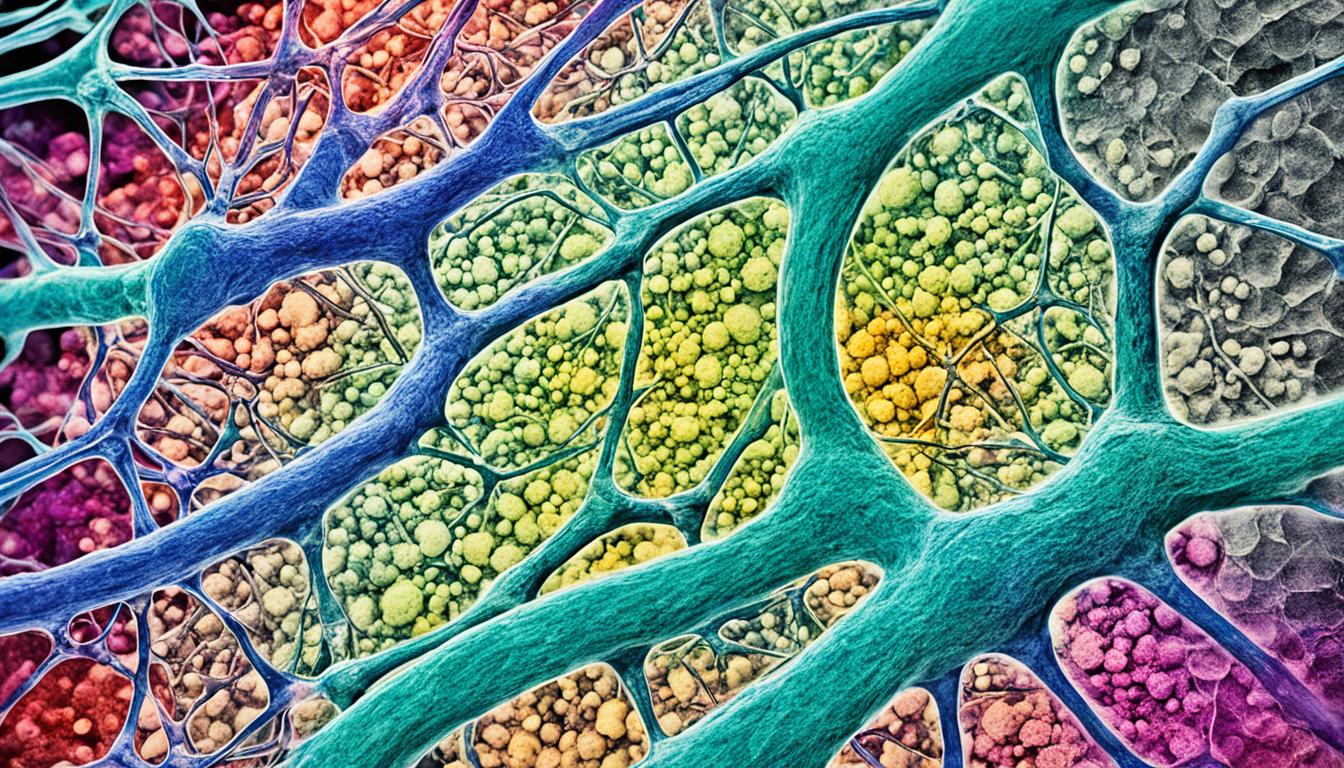Bone cancer is a rare situation. It happens when abnormal cells in the bone grow out of control. This growth can damage normal bone tissue. Most bone tumors are not cancerous, but they can still make bones weak and more likely to break.
There are different kinds of non-cancerous bone tumors. These include osteochondroma, giant cell tumor, osteoid osteoma, osteoblastoma, and enchondroma.
Primary bone cancer, or bone sarcoma, is cancer that starts in the bone. The common types are osteosarcoma, Ewing’s sarcoma, and chondrosarcoma. Sometimes cancer can spread to the bones from other parts of the body too.
Things like past cancer treatments, certain genetic conditions, and Paget’s disease of the bone can raise the risk of bone cancer. It’s key to spot the signs early. Symptoms may be pain, swelling, and breaks in the bone.
Finding bone cancer starts with imaging tests like X-rays and CT scans. These help see where and how much cancer there is. A biopsy, taking a small tissue sample, is needed to be sure.
The treatments vary depending on the type and stage of cancer. Options include surgery, radiation, and chemo. Stem cell therapy is an exciting new way to help heal bones.
Key Takeaways:
- Bone cancer is not common but it’s serious, growing abnormal cells in the bone.
- It can be non-cancerous or cancerous, with different types and causes.
- Things like past cancer treatments or certain diseases can make bone cancer more likely.
- Noticing signs early, such as pain or breaks in bones, is very important.
- Seeing the cancer with tests and a biopsy confirms the diagnosis.
- Treatments may involve surgery, radiation, or chemotherapy, depending on the cancer.
- New treatments like stem cell therapy aim to improve bone healing and growth.
Types of Bone Marrow Cancer and Symptoms
Bone marrow cancer is a group of cancers affecting blood cells in the bone marrow. It’s responsible for making red, white, and platelet blood cells. Common types are leukemia, multiple myeloma, lymphoma, myelodysplastic syndromes, and myeloproliferative neoplasms.
- Leukemia: Affects the white blood cells and can be acute or chronic.
- Multiple myeloma: Occurs when the bone marrow makes too many plasma cells. This can lead to bone loss and a higher risk of infections.
- Lymphoma: Affects the lymphocyte cells of the immune system and may lead to bone marrow issues.
- Myelodysplastic syndromes: Cause abnormal blood cell production in the bone marrow, leading to low blood cell counts.
- Myeloproliferative neoplasms: Cause overproduction of white blood cells, red blood cells, and platelets due to bone marrow stem cell issues.
The signs of bone marrow cancer vary by type. They might include fatigue, pain, and weight loss.
| Type of Bone Marrow Cancer | Symptoms |
|---|---|
| Leukemia | Fatigue, frequent infections, bleeding, easy bruising |
| Multiple Myeloma | Bone pain, fractures, anemia, frequent infections |
| Lymphoma | Swollen lymph nodes, night sweats, unexplained weight loss |
| Myelodysplastic Syndromes | Anemia, frequent infections, easy bleeding or bruising |
| Myeloproliferative Neoplasms | Fatigue, easy bleeding or bruising, enlarged spleen |
Diagnosis and Treatment of Bone Marrow Cancer
Diagnosing bone marrow cancer is complex. It requires a doctor to do a physical exam and review your medical history. Tests like blood work and imaging scans help find cancer cells. These tests also show how far the cancer has spread.
Treatment for bone marrow cancer varies. It depends on the cancer type, its stage, and your health. Chemo, radiation, and stem cell therapy are common treatments. They aim to destroy cancer cells or help your body make more healthy cells.
Bone Marrow Cancer Diagnosis
Finding bone marrow cancer starts with a doctor’s exam and your medical history. They use blood tests to check your cell levels and look for cancer signs. A metabolic panel test checks your organ health too.
Sometimes, more tests like biopsies and scans are needed. They give detailed info on the cancer. These tests help pick the best treatment.
Bone Marrow Cancer Treatment
Treatment depends on your condition and needs. It’s customized based on the cancer type and its stage. Common treatments include:
- Chemotherapy: It uses strong drugs to kill cancer cells.
- Radiation therapy: Beams target and kill cancer cells.
- Immunotherapy: It boosts your immune system to fight the cancer.
- Targeted therapy: Drugs target specific cancer growth areas.
- Stem cell transplantation: It adds healthy stem cells to your marrow.
Your healthcare provider will create a treatment plan just for you. It’s key to talk about your treatment options and what to expect. Being informed helps you make the best choices.
Conclusion
The outlook for bone cancer varies based on type, stage, and patient’s health. For example, when caught early, multiple myeloma has a 77.5% 5-year survival rate. The kind of leukemia also impacts its survival rates. The overall 5-year survival rate for leukemia is 66.7%.
Keeping up with your healthcare team is vital to fight bone cancer effectively. Doctors and specialists help create a treatment plan and offer continuous care. Lifestyle choices are also key. Quitting smoking, staying at a healthy weight, and being active help a lot. Eating well and limiting alcohol are good for your health too.
It’s important to work with healthcare experts when facing bone cancer. They ensure the best possible care and advice. This collaboration enhances your chances of recovering well. Remember, medical treatment, healthy living, and regular check-ups are the winning combination for managing bone cancer.

